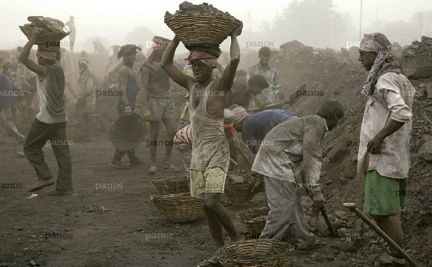Official: Coal ash brings cash boon to Perry County
Critics say environmental risks not worth benefit
FILE | The Associated Press
This Dec. 22, 2008, aerial view shows homes that were destroyed in a coal ash spill when a retention wall at a pond collapsed at the Tennessee Valley Authority's Kingston Plant in Roane County, Tenn. What happened to the coal ash: For the past year and a half, coal ash has been transported to Alabama for disposal at the Arrowhead Landfill in Perry County. The disposal has generated about $4.22 million for Perry County, Uniontown, Marion and the Perry County Board of Education.
Published: Thursday, December 23, 2010 at 3:30 a.m.
Last Modified: Wednesday, December 22, 2010 at 11:31 p.m.
Last Modified: Wednesday, December 22, 2010 at 11:31 p.m.
A train carrying the last shipment of coal ash dredged from two east Tennessee rivers has come and gone in Perry County.
But the benefits — or, some contend, the dangers — are ongoing and possibly could continue indefinitely.
Proponents for the disposal of coal ash in Perry County, which has brought in millions of dollars since 2009 to this rural Black Belt county, are prepared to seek additional sources of coal ash. If these efforts are successful, Perry County could become the de facto coal ash capital of the state.
“We're not out of the coal ash business,” said Perry County Commissioner Albert Turner Jr., who lauded the benefits of coal ash to this rural county of 11,000 residents to Congress in December 2009.
Environmentalists, however, claim that the toxins brought by the coal ash could prove harmful — if not deadly — to residents living near the Arrowhead Landfill, which has taken in more than 4 million tons of the material since June 2009. They also contend the coal ash is possibly harming streams and groundwater drinking sources.
“This is not just dirt. It's a dust that carries with it a bunch of heavy metals, including mercury,” said Tuscaloosa-
based environmental activist John Wathen. “We don't know what's going to happen to Perry County in the future.”
Ashes, then riches
On Dec. 22, 2008, millions of tons of coal ash spilled from the holding pond of the Tennessee Valley Authority's coal-fired Kingston Plant in Roane County, Tenn.
Six months later, in June 2009, the Arrowhead Landfill in Uniontown began receiving near daily trainload shipments of the material, known to contain toxins and pollutants.
The bulk of the cleanup took just less than two years, and on Dec. 1, 2010, the last trainload of coal ash that had been dredged from rivers surrounding the power plant left Tennessee for the landfill in Perry County. It arrived three days later.
The final shipment of Train 414, according to TVA documents, marked the end of 4.02 million tons of coal ash that had come from Kingston to Uniontown. The Perry County Commission's agreement with the landfill operators nets the government $1.05 per ton for land use fees.
All told, the disposal in Perry County has brought in about $4.22 million during the past 18 months and divided among the county government, the cities of Uniontown and Marion and the Perry County Board of Education.
“We are very pleased with the operation. The benefits have been enormous,” Turner said. “Perry County is moving at a pace unseen for rural counties in these economic times.”
To illustrate his point, Turner points to a number of projects that either are under way or ready to begin. Among them are a $2 million resurfacing project for about five miles of Perry County Road 24 between Alabama highways 14 and 183. Turner said coal ash proceeds helped the county provide matching dollars for the federal grant that's funding the project.
He said the county spent $250,000 of its coal ash funds to buy a tract of land on which a developer is constructing a new Sleep Inn hotel.
Additional money has been spent to secure grants that will bring $200,000 to Perry County schools, a $1.5 million renovation for the county courthouse and a $3 million water line extension throughout the county.
He also said the cities of Marion and Uniontown will receive new $400,000 sewage and wastewater treatment plans online in 2011.
In addition to the tonnage fees, the handling and disposal of the daily shipments of the material also brought jobs.
Eddie Dorsett, the president of Phill-Con Services, which operates the landfill, said that during the disposal of the ash and, before that, the construction of the landfill cells to hold the coal ash, about 80 new jobs were created. The ash disposal alone created 60 of them.
Dorsett didn't say in an e-mailed response from his attorney how many of those jobs still remain.
“We're one of the most economically sound counties in rural, western Alabama as a result of the influx of monies we've received from coal ash,” Turner said.
‘A gray cloud'
Perry County could also be one of the most environmentally hazardous counties in the state as a result of the coal ash.
Two lawsuits — one in Perry County Circuit Court and another in U.S. District Court — cite a series of alleged environmental violations ranging from the creation of noxious odors to improperly covering and controlling the dissemination of coal ash. The suits ask the respective courts to order landfill operators Phill-Con Services LLC and Phillips and Jordan Inc. to immediately halt the acts.
Dorsett said the geologic location of the landfill atop a massive rock formation makes it naturally safer than other landfills in other parts of the country.
Dorsett also said that officials with the Alabama Department of Environmental Management and the U.S. Environmental Protection Agency have visited the landfill to keep an eye on the handling and control of the coal ash.
“Since the beginning of placement of ash in the landfill in July 2009, Arrowhead has been inspected numerous times by ADEM and jointly by an ADEM/EPA team,” Dorsett said. “And there have been no violations of federal, state, or local laws and regulations reported.
“Additionally, ADEM personnel have been on-site on numerous other occasions for observation and review of the operations and in no case have violations been observed or noted.”
The lawsuits, which were filed last year, await a U.S. bankruptcy court decision before they can go forward, said Florida-based environmental lawyer David A. Ludder.
Ludder, who filed the court actions on behalf of 64 Perry County residents, is worried that other coal ash-producing companies may see Arrowhead as a convenient place to dump the material that's known to contain arsenic and heavy metals, including mercury.
“Certainly one of our concerns is that other generators of coal ash may see this site as attractive, especially with all the attention that coal ash is getting,” Ludder said.
He said residents near the landfill have been exposed to the ash blown by wind and, despite assurances from Dorsett and the landfill operators, Ludder is concerned that nearby groundwater could be contaminated.
Proper sealing of the landfill sections that contain the coal ash could prevent some future problems, Ludder said.
“I do think the permanent cover on the coal ash will probably do a great deal to eliminate the offensive odors,” Ludder said.
Wathen, who assisted Ludder's fact-finding operations, said that he, too, is worried that future shipments of coal ash could further endanger Perry County residents.
“Every time the wind blows hard, you have a gray cloud sweep across that community,” Wathen said.
Bring it on
The county commissioner is outspoken in his position that he would like more power companies to consider Perry County for future coal ash disposals.
Turner said the Arrowhead Landfill is state-of-the-art and safe. And the economic benefits of making Perry County synonymous with coal ash disposal are too great to turn down.
“I haven't seen any negative effects of coal ash in the surrounding communities,” Turner said, who maintains that residents in communities surrounding landfill have made no complaints. “There have not been any reports to the County Commission of any adverse health or environmental problems.
“The largest thing we've had to deal with is mud on the highway.”
Federal regulators are examining the standards for handling coal ash across the country, including a ban on allowing the operators of coal-fired power plants to store the ash, which is a by-product of the electricity-generating process, on the same site as the power plant.
While these guidelines are being decided, Turner said he and landfill operators have been “working feverishly” to hold up Perry County and the Arrowhead Landfill as “the model of disposing coal ash in the United States.”
“We expect even more coal ash to come in to Perry County once these regulations are confirmed,” Turner said. “And we stand ready with 400 acres of undisturbed land.”
Reach Jason Morton at jason.morton@tuscaloosanews.com or 205-722-0200.
Here's what the citizens had to say about this...






















